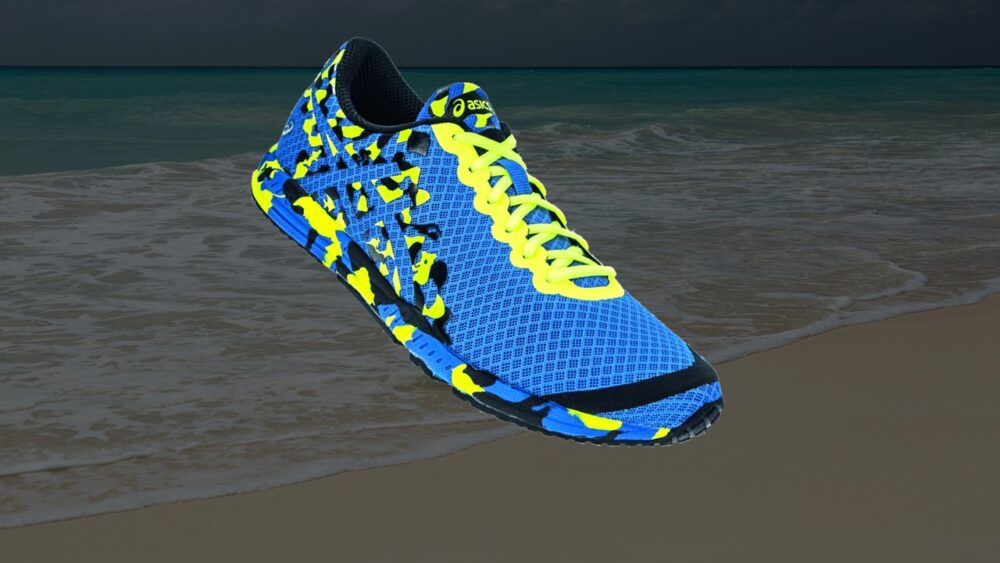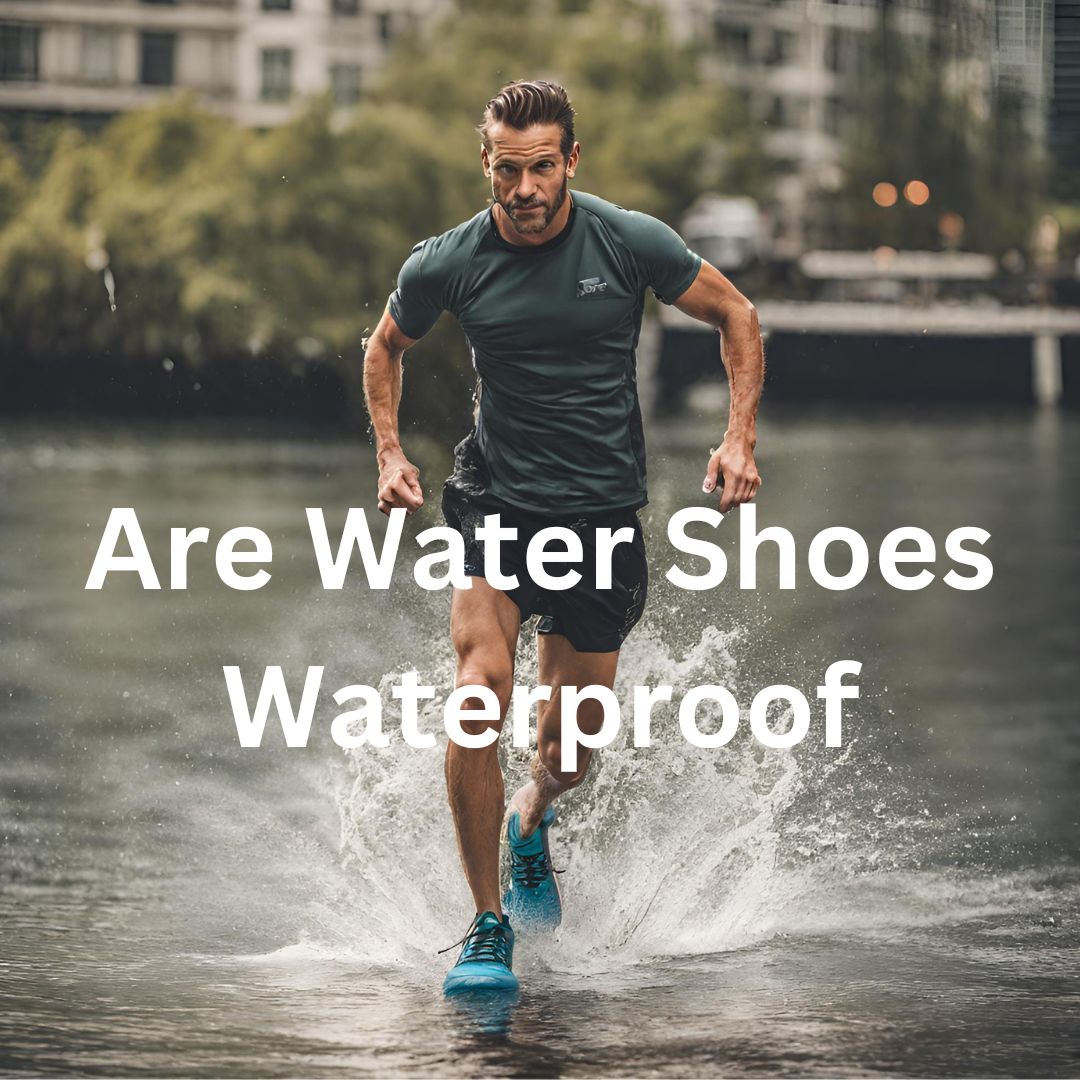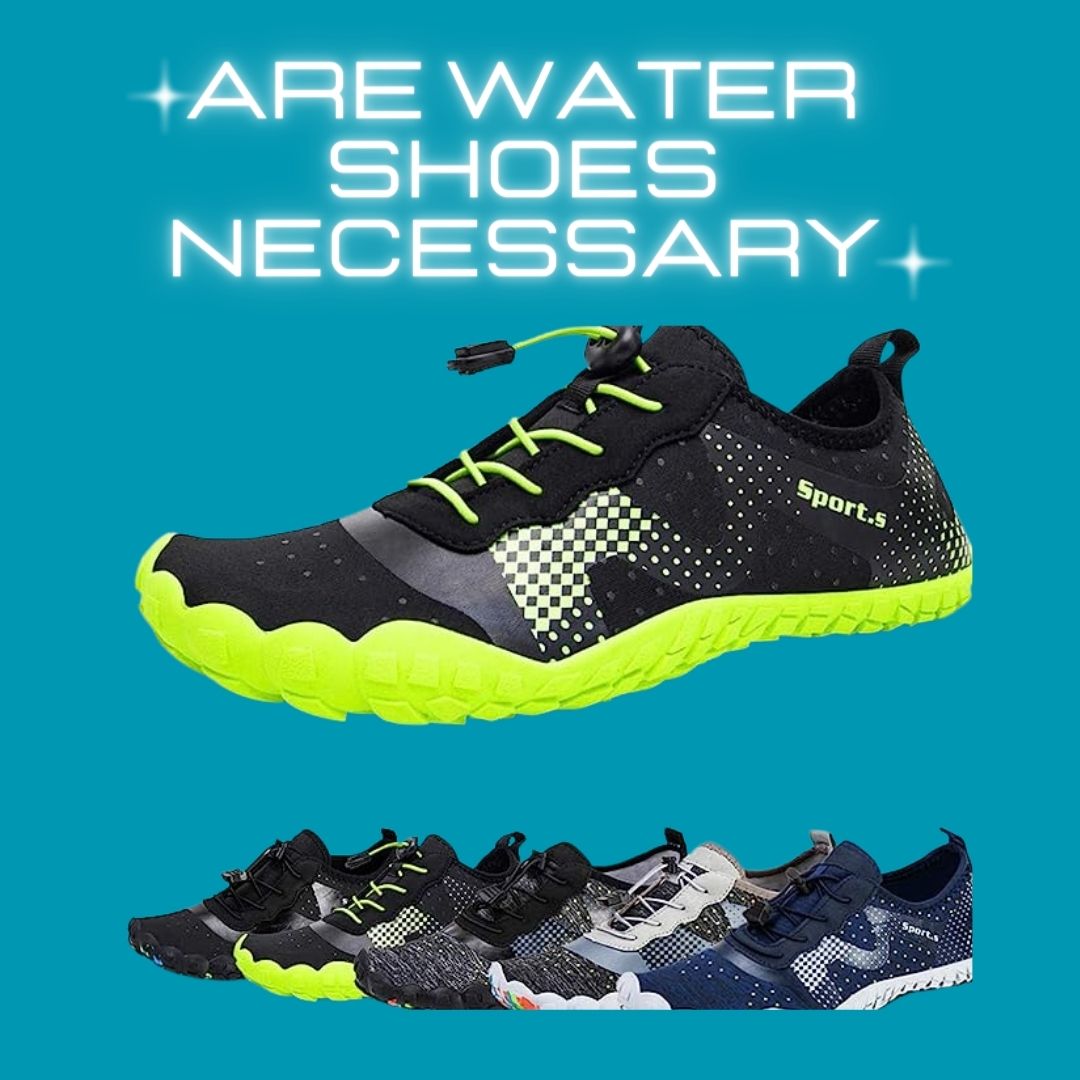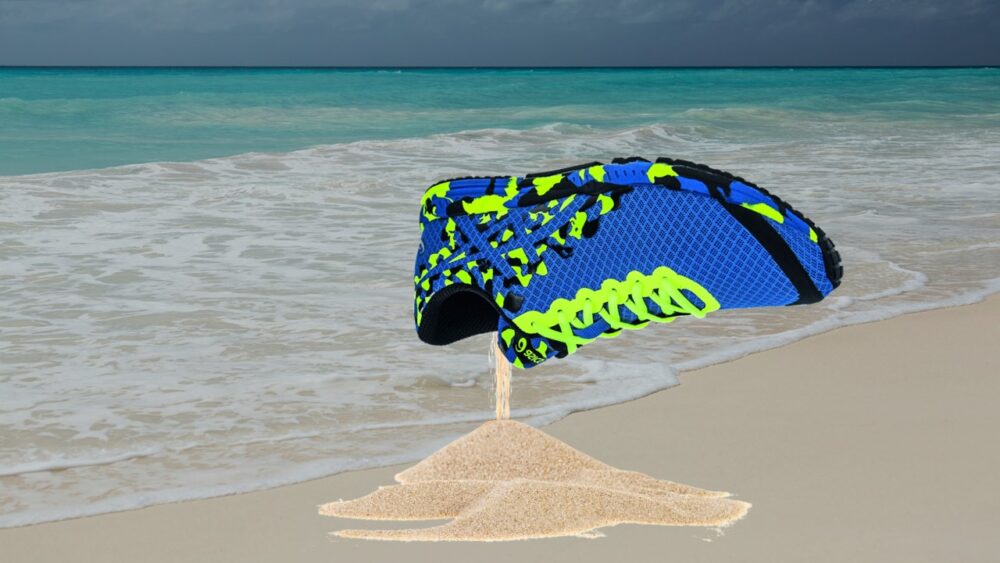What Are Water Shoes Used For – Dive into Benefits, Types, and More for Your Ultimate Water Adventures!
What are water shoes used for? In one word, protection. Water shoes are designed to protect your feet from the elements when engaging in water activities. They can help prevent cuts and scrapes from sharp rocks and shells, as well as protect you from hot sand and pavement.
Water shoes are not just about practicality; they’re about enhancing your overall experience by providing the freedom to explore without worrying about foot-related mishaps.
In this article, we’ll delve deeper into the world of water shoes and explore their primary uses and benefits. We’ll discuss the different types of water shoes available, how to choose the right pair for your specific needs and provide insights on maintenance and care.
What Are Water Shoes Used For
If you love spending time in or near the water, you might have wondered what are water shoes used for and whether you need a pair.
Water shoes are a type of footwear that is specially designed to protect your feet from cuts, abrasions, and slips when you are engaged in activities that involve frequent transitions between dry land and water.
They are usually made of mesh or neoprene uppers and have a grippy rubber sole that provides better traction on wet surfaces. So, what are water shoes used for?
Water shoes can be used for a variety of water sports and activities, such as:
1. Kayaking, Canoeing, Boating, And Fishing
Water shoes can keep your feet comfortable and dry when you are paddling on the water or stepping in and out of your vessel. They can also prevent slips on the wet deck or floor and protect your feet from sharp objects or hooks.
2. Snorkeling, Scuba Diving And Swimming
Water shoes can help you walk on rocky or coral reefs without hurting your feet or damaging the marine life. They can also keep your feet warm in cold water and prevent blisters from fins or flippers.
3. Coasteering, Canyoning, And Tubing
Water shoes can provide stability and grip when you are climbing, jumping, or sliding on wet rocks or cliffs. They can also cushion your feet from impacts and prevent injuries from sharp edges or debris.
4. Paddleboarding, Surfing, And Windsurfing
Water shoes can enhance your balance and control when you are standing or moving on your board. They can also prevent abrasions from the board’s surface or wax and protect your feet from jellyfish stings or sea urchins.
5. Hiking, Walking, And Biking On Wet Or Muddy Trails
Water shoes can keep your feet dry and comfortable when you encounter puddles, streams, or mud along your route. They can also prevent fungal infections or odors from dampness and allow your feet to breathe.
6. Foot Protection
Water shoes are primarily used to protect your feet while engaging in activities near or in the water. They feature durable materials and reinforced soles that shield your feet from sharp rocks, shells, coral, broken glass, or other potential hazards often found on beaches or riverbeds.
7. Enhanced Traction
These shoes are equipped with non-slip soles that provide excellent grip on wet and slippery surfaces. Whether you’re walking on a wet dock, navigating riverbanks, or exploring a pool area, water shoes help prevent slips and falls, offering a safer experience.
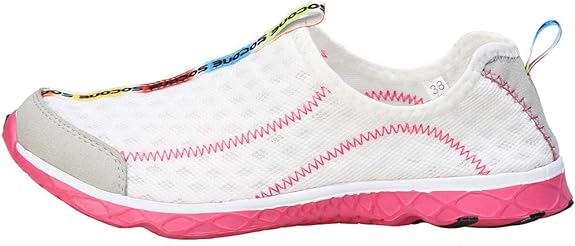
The Best Water Shoes
For those who relish water adventures, whether you’re wading through a rocky riverbed, gliding over ocean waves, or exploring serene lakeshores, the right water shoes can transform your experience.
We present to you the epitome of water footwear, meticulously designed to provide unmatched comfort, protection, and versatility. Here are the best water shoes:
Product Image | Product Name | Key Features | Rating | Price |
| ||||
| ||||
| ||||
| ||||
| ||||
| ||||
| ||||
| ||||
| ||||
|
What Are The Benefits Of Water Shoes? (What Are Water Shoes Used For)
Water shoes are the type of footwear designed to be worn in or near water. They are usually made of quick-drying, breathable, and lightweight materials that can protect your feet from sharp objects, hot sand, or slippery surfaces.
Water shoes can also provide traction, comfort, and support for various water activities, such as swimming, kayaking, snorkeling, or hiking.
Some of the benefits of water shoes are:
1. They Prevent Injuries And Infections
Water shoes can shield your feet from cuts, scrapes, blisters, or burns caused by rocks, shells, coral, or other hazards in the water. They can also reduce the risk of fungal or bacterial infections that can occur from walking barefoot in wet or dirty environments.
3. They Enhance Performance And Stability
Water shoes can improve your grip and balance on wet or uneven terrain, which can help you move faster and safer. They can also prevent your feet from sliding or slipping inside the shoes, which can improve your comfort and efficiency.
3. They Are Versatile And Convenient
Water shoes can be worn for a variety of water sports and outdoor activities, as well as for casual or everyday use. They are easy to put on and take off, and they don’t require socks or laces. They are also easy to clean and dry, and they don’t take up much space in your luggage or backpack.
4. Comfort
Water shoes can keep your feet dry and cozy when you are in or out of the water. They can also prevent blisters, chafing, rubbing, or irritation from sand, gravel, or other materials. Additionally, most water shoes do not require socks, which can add to your comfort level.
5. Versatility
Water shoes can be used for multiple purposes and occasions. You can wear them for different types of water activities as well as casual outings on the beach or around town. You can also choose from various styles, colors, and designs to suit your preferences and personality.
6. Quick-Drying
Water shoes are typically constructed from materials that dry quickly. This feature minimizes discomfort and the formation of blisters caused by prolonged exposure to wet conditions. Your feet stay dry and comfortable, even after getting wet.
7. Easy Maintenance
Caring for water shoes is relatively straightforward. They can be rinsed and cleaned easily, and they don’t require extensive maintenance, making them a convenient choice for outdoor enthusiasts.
What Types Of Water Shoes Are There? (What Are Water Shoes Used For)
There are several types of water shoes based on your need, ranging from something that resembles a sock to footwear that can function as a sneaker or even a boot. Some of the common types of water shoes are:
1. Water socks: These are the most lightweight and minimalist type of water shoes. They are made of thin fabric that hugs your feet like socks. They are perfect for swimming and can occasionally be worn inside scuba gear. However, they do not offer much protection or support for your feet.
2. Water sandals: These are open-toed footwear that have straps or buckles to secure your feet. They are easy to put on and take off and allow more air circulation for your feet. They are suitable for casual walking or lounging on the beach but not for rigorous activities that require more coverage or grip.
3. Water sneakers: These are closed-toed footwear that have laces or Velcro to fasten your feet. They are more durable and supportive than water socks or sandals and offer more protection and traction for your feet.
They are ideal for hiking, biking, kayaking, paddleboarding, or other adventurous activities that involve both land and water.
4. Water boots: These are high-cut footwear that cover your ankles and sometimes your calves. They are made of thick material that provides extra warmth and insulation for your feet. They are perfect for cold-water activities such as diving, snorkeling, surfing, or fishing.
5. Water Hiking Shoes: Water hiking shoes are designed for hiking in wet conditions. They often have durable, high-traction outsoles, reinforced toe caps for protection, and water-resistant or quick-drying materials. They are suitable for river crossings and hiking in areas with water features.

How to Choose The Best Water Shoes (What Are Water Shoes Used For)
When choosing the right water shoes, it’s essential to consider various factors to ensure they meet your specific needs and preferences. Here are some tips to help you make an informed decision:
- Activity Type: Determine the primary activity for which you’ll use the water shoes. Different water shoes are designed for various purposes, such as beachcombing, kayaking, hiking, or water sports. Ensure the shoes you choose are suitable for your intended activities.
- Fit and Sizing: Proper fit is crucial for comfort and performance. Ensure the water shoes fit snugly but not too tight. They should allow your toes to wiggle slightly, and the heel should stay in place to prevent blisters. Pay attention to sizing charts provided by the manufacturer and consider trying them on if possible.
- Materials: Water shoes are typically made from materials like neoprene, mesh, or synthetic fabrics. Neoprene provides excellent insulation and is suitable for colder water, while mesh offers breathability in warmer conditions. Choose the material that suits the water temperature and your comfort preferences.
- Sole and Traction: Look for water shoes with durable, non-slip soles that provide excellent traction on wet and slippery surfaces. For rocky terrains, consider shoes with thick, protective soles that can withstand sharp objects.
- Drainage: Efficient drainage is essential to prevent water from pooling inside your shoes. Look for models with drain holes or mesh panels to ensure quick water evacuation and avoid waterlogged shoes.
- Support and Cushioning: Consider your need for arch support and cushioning, especially if you’ll be wearing the shoes for extended periods. Some water shoes offer additional padding and arch support for added comfort during long walks or hikes.
- Toe Protection: For activities in rugged environments, such as river trekking, it’s beneficial to choose water shoes with reinforced toe caps to protect your toes from impacts and stubs.
- Adjustability: Some water shoes come with adjustable straps or laces for a customized fit. This feature allows you to fine-tune the tightness and stability of the shoes to your liking.
- Style and Design: While functionality is paramount, water shoes come in various styles and colors. Choose a design that matches your personal preferences and outdoor wardrobe.
- Brand and Reviews: Research and read reviews from other users to gain insights into the performance and durability of specific water shoe brands and models. Trusted brands often offer higher quality products.
- Budget: Set a budget based on your requirements and the quality you desire. Water shoes are available in a wide price range, so you can find an option that meets your needs and budget.
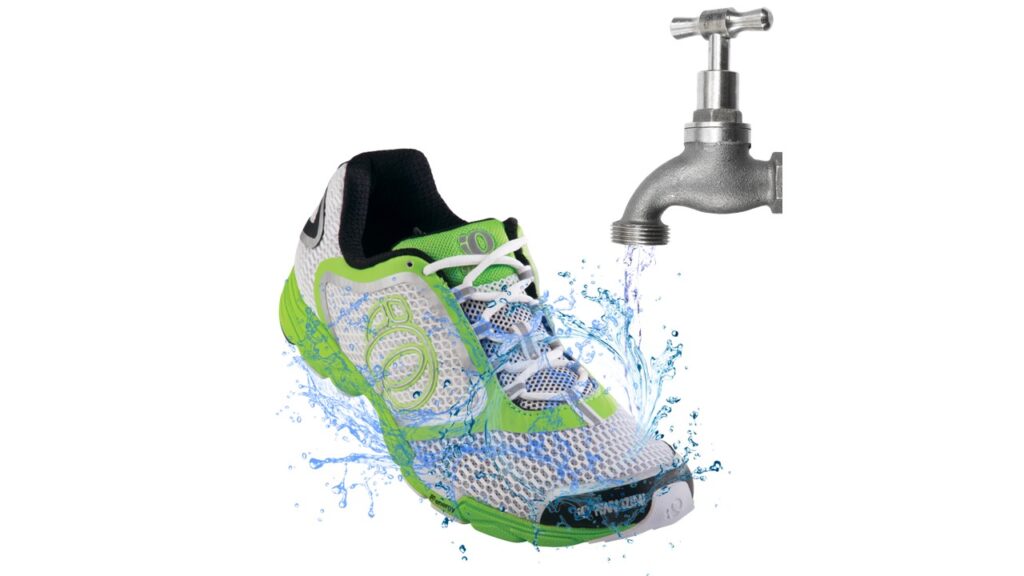
How To Care For Water Shoes (What Are Water Shoes Used For)
Proper maintenance and care of your water shoes are essential to extend their lifespan and ensure they remain in good condition. Here’s a guide on how to care for your water shoes:
Cleaning
1. Rinse After Use: After every use, rinse your water shoes with freshwater to remove sand, salt, and other residues. Pay particular attention to the soles and the inside of the shoe to get rid of any debris.
2. Hand Washing: If your water shoes are particularly dirty or have come into contact with contaminants, hand wash them with a mild detergent and a soft brush or cloth. Avoid using harsh chemicals that can damage the materials.
3. Machine Washing (if recommended): Some water shoes are machine-washable. Check the manufacturer’s care instructions on the label or website to see if this is a suitable option for your specific shoes.
Drying
4. Air Dry: After cleaning, let your water shoes air dry completely. Avoid exposing them to direct sunlight or heat sources like radiators, as excessive heat can cause materials to deteriorate. Instead, place them in a well-ventilated area.
5. Remove Insoles: If your water shoes have removable insoles, take them out to dry separately. This ensures thorough drying and prevents the growth of odor-causing bacteria.
Storage
6. Keep Them Dry: Before storing your water shoes, ensure they are completely dry. Moisture can lead to mold and unpleasant odors. Use a shoe tree or stuff the shoes with newspaper to help maintain their shape while they dry.
7. Store in a Cool, Dry Place: Choose a cool, dry storage location for your water shoes, away from direct sunlight and extreme temperatures. Avoid leaving them in a hot, enclosed space, as this can cause materials to deteriorate.
8. Avoid Prolonged Compression: Do not stack heavy items on top of your water shoes, as prolonged compression can affect their shape and performance.
Maintenance Tips
9. Regular Inspection: Periodically check your water shoes for any signs of wear and tear, such as fraying seams or damaged soles. Address any issues promptly, such as with the use of appropriate adhesives or repairs.
10. Reapply Water Repellent: If your water shoes were treated with a water-repellent coating when purchased, consider reapplying it as needed to maintain water resistance.
11. Rotate Use: If you frequently use your water shoes, consider having multiple pairs to rotate between. This allows them to dry fully between uses, reducing the risk of odors and prolonging their lifespan.
By following these care and maintenance practices, you can ensure that your water shoes remain in good condition, stay hygienic, and provide optimal performance for a longer period, ultimately giving you better value for your investment.
Are Water Shoes Waterproof (What Are Water Shoes Used For)
Water shoes are not typically waterproof; instead, they are water-resistant. This means that they possess the ability to repel water to a certain extent, but their primary design isn’t centered around keeping your feet completely dry.
In cases where you encounter water, it’s possible for it to seep into the shoes through the mesh or neoprene upper. Furthermore, if you venture into deep water, they may even fill with water.
However, the beauty of water shoes lies in their swift drainage capability. This ensures that your feet won’t remain in a soggy state for an extended period.
Moreover, they are usually crafted from breathable materials, preventing excessive sweating and maintaining a comfortable environment for your feet.
For situations that demand truly waterproof footwear, you might want to consider options like rain boots or waterproof hiking boots. Nevertheless, it’s worth noting that while these shoes excel in keeping your feet dry, they might not offer the same level of comfort and breathability that water shoes provide.
The choice between water shoes and waterproof boots largely depends on the specific water activity and your comfort preferences.
What Are Water Shoes Used For In The Ocean
Water shoes serve various purposes when used in the ocean. Here’s what water shoes are typically used for in ocean-related activities:
- Protection from Sharp Objects: The ocean floor can be filled with sharp rocks, shells, and coral, which can pose a danger to your feet. Water shoes provide a protective barrier, preventing cuts and injuries when walking in the water.
- Preventing Slips: Water shoes offer excellent traction on slippery surfaces like rocks and algae-covered areas, reducing the risk of slips and falls, especially in areas where the ocean meets the shore.
- Coral Reef Exploration: For snorkeling or exploring coral reefs, water shoes offer protection against the sharp edges of the coral, ensuring you can navigate these beautiful underwater landscapes safely.
- Beachcombing: Water shoes are excellent for beachcombing and walking along the shoreline, where you might encounter shells, broken glass, or other sharp debris.
- Paddleboarding and Kayaking: Water shoes are essential for water sports like paddleboarding and kayaking, as they provide stability, protect your feet from submerged obstacles, and help with launching your board or kayak.
- Rocky Beaches: When visiting beaches with rocky terrain, water shoes ensure your comfort and safety as you explore tide pools, cliffs, and other rocky features.
- Comfort and Quick-Drying: Water shoes keep your feet comfortable and dry even when they get wet, which is especially important when enjoying the ocean’s waves and surf. 820 573
The Bottom Line On What Are Water Shoes Used For
Understanding what are water shoes used for is the key to unlocking a world of enhanced comfort, protection, and versatility during your water-based adventures.
With their ability to safeguard your feet, provide traction, and drain water swiftly, water shoes are an essential choice for those who embrace outdoor activities near or in the water. So, whether you’re beachcombing, kayaking, or navigating rocky riverbeds, water shoes have got your feet covered.










